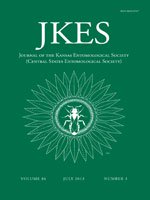The Leptosaldinae (Leptopodomorpha: Leptopodidae) are considered an isolated subfamily, possibly the sister group to the remaining species of the bug family Leptopodidae. Until now the subfamily consisted of two species: Leptosalda chiapensis Cobben, in Miocene amber from Chiapas, Mexico; and Saldolepta kistnerorum Schuh and Polhemus, a Recent species from Ecuador and Colombia. The new species, Leptosalda dominicana Grimaldi and Engel and L. niarchos Grimaldi and Engel are described from Miocene amber of the Dominican Republic (a third species is recorded but undescribed since it is based on a very fragmentary specimen). Archaesalepta Grimaldi and Engel, new genus, is described for A. schuhi Grimaldi and Engel, new species, preserved in Early Eocene Cambay amber from western India, and which appears to be a sister group to the New World leptosaldines. Unexpected discovery of a leptosaldine from the Old World greatly expands the known distribution and emphasizes the perils of biogeographic scenarios in the absence of fossil data. Archaesalepta schuhi reveals that leptosaldines were once more widespread and that their present-day distribution is relict.
How to translate text using browser tools
1 July 2013
Bugs in the Biogeography: Leptosaldinae (Heteroptera: Leptopodidae) in Amber from the Miocene of Hispaniola and Eocene of India
David A. Grimaldi,
Michael S. Engel,
Hukam Singh
ACCESS THE FULL ARTICLE
amber
biogeography
Hemiptera
Leptopodomorpha
shore bugs, Tertiary





